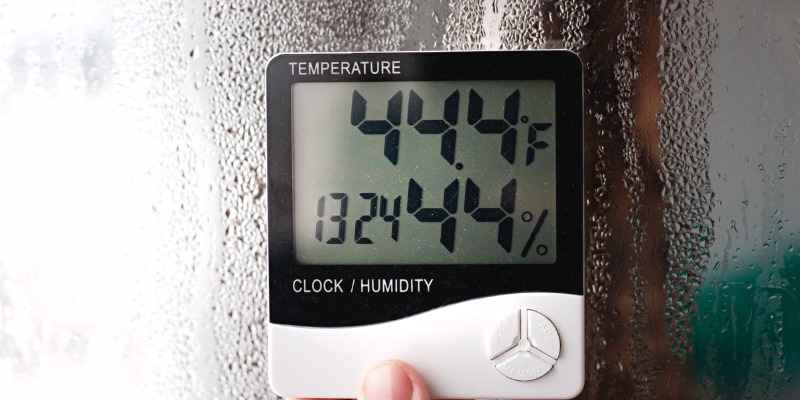
Effectively monitoring indoor humidity is crucial for the health and well-being of your building and its occupants. We know what you're thinking, "The health of my building?" That's right. Buildings get sick too! And it can cause significant problems for the owner and anyone who has to spend time inside its walls.
What kind of problems, you might ask? For the building, water marks, rotting wood and mould growth, to name a few. For the people inside, you're looking at higher incidences of sickness, respiratory infections, rapid spreading of viruses, sore throats, dry noses and cold, cranky people!
Today we'll be giving you all the facts when it comes to indoor humidity (especially during the winter months) and how to optimize it for comfort, health and cost-effectiveness in your home or building.
The Mayo Clinic defines ideal indoor humidity levels to be in the 30% to 50% range. This basically means that it's 30% to 50% of the amount of water the air could potentially hold. When you start to creep above these levels, the room will begin to feel stuffy. You'll see condensation on the windows and maybe even notice dampness in the walls. These are, unfortunately, ideal conditions for viruses and bacteria to spread.
When you drop below 30%, that is when the area will begin to feel dry. Your body will reduce its mucous production resulting in dry throats and nasal passages, leaving you open to respiratory infections, bloody noses and coughs.
The best indoor humidity levels in the winter are around 35% to 45% (it can be hard to get them higher than this). When the air is cold, it holds less moisture. This lowers the humidity in your home and can actually make it feel colder than it is because dry air feels colder on the skin.
Not being able to maintain humidity levels in the winter can lead to higher heating costs as a result of this cold, dry feeling.
Want to learn more about humidity levels and how you can improve the air quality in your home? Look no further. Our team at Appleby Systems can help! Call us today.
Too much humidity can be a problem, particularly in the summer months when temperatures are warmer. Ensuring your doors and windows are completely sealed will prevent excessive heat from getting inside. You may also want to consider installing a dehumidifier to remove excess moisture or upgrading your central air conditioning system. Failing to do so could result in the spread and growth of mould and viruses.
| Outdoor Temperature | Indoor Humidity |
| Higher than 10℃ | Max. 50% |
| -4℃ to 10℃ | Max. 40% |
| -18℃ to -4℃ | 30% to 40% |
| -29℃ to -18℃ | 20% to 35% |
| Below -29℃ | 15% to 35% |
If you're looking for expert advice, installation, and maintenance of different types of humidity control for your home or building, Appleby Systems is here to help. Contact us today for a free quote!
